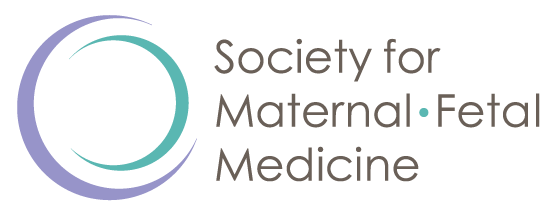
Preterm Birth
Each year, about 1 in 10 babies in the United States is born preterm (before 37 weeks of pregnancy). Preterm birth can happen for many reasons and may lead to health problems, especially when birth happens before 34 weeks. Some risk factors for preterm birth can be changed, while others cannot. Getting early and regular prenatal care may help lower the chances of some complications.
-
Pregnancy normally lasts about 40 weeks (a little over 9 months from the first day of the last period). “Preterm birth” is defined as birth before 37 weeks of pregnancy.
Sometimes, preterm birth can happen on its own. This is called spontaneous preterm birth. Other times, labor is induced (started by medications or other means) or a cesarean delivery is performed early for medical reasons to protect the mother’s or baby’s health. This is called a medically indicated preterm birth.
Preterm birth has been divided into these categories:
Preterm birth: Birth that occurs before 37 weeks of pregnancy
Late preterm birth: Birth that occurs between 34 and 36 weeks of pregnancy
Early preterm birth: Birth that occurs before 34 weeks of pregnancy
The earlier a baby is born, the greater the chance of more serious and long-lasting health risks. But even babies born later in the preterm period (between 34 and 36 weeks) can have health problems. Babies born before 22 or 23 weeks have very low survival rates, and if they do survive, are more likely to have lifelong health problems.
-
About 1 in 10 babies in the United States is born preterm.
-
Infants born preterm are more likely to have health problems, especially in the first year of life. These may include:
Trouble with breathing, eating, and keeping warm
Infections
Cerebral palsy
Hearing and vision loss
Slower growth and development
Behavioral problems and learning difficulties
The majority of preterm babies need to stay in a neonatal intensive care unit (NICU) to get special medical care. Once they leave the hospital, some babies may still need ongoing care to treat medical issues. Some health problems can last well into childhood.
-
The following risk factors have been associated with preterm birth:
Preterm birth in a previous pregnancy
Lifestyle factors, including smoking, substance use, and low prepregnancy weight
Having limited access to resources, including prenatal care, reliable transportation, or a safe living situation
Getting pregnant less than 18 months after having a baby
Having bacteria in the urine, a condition called bacteriuria, especially if it occurs without causing any symptoms
Having a short cervix as measured by ultrasound
Pregnancy complications such as preeclampsia, problems with the placenta, and fetal growth restriction.
Fetal genetic conditions
Medical conditions that existed before pregnancy, including high blood pressure, diabetes, and lupus
Preterm labor (when labor contractions start too early) and preterm premature rupture of membranes (when your water breaks before labor starts and it’s before 37 weeks)
Being pregnant with twins, triplets, or more
Many pregnant people have at least one risk factor for preterm birth. Having a risk factor does not mean that you will have a preterm birth. Some risk factors, like smoking, can be changed. Others, such as having a previous preterm birth, cannot. Extra care during pregnancy may be recommended.
-
Frequent, regular contractions that:
Occur 6 or more times in 1 hour
Cause your belly to tighten and harden and are uncomfortable
Lower abdominal cramps or a low backache that gets worse or doesn’t go away
A change in vaginal discharge (watery, bloody, or like mucous) or an increase in discharge
Pelvic pressure (a feeling that the baby is pushing down)
Your water breaks
Bleeding with or without abdominal pain
-
If you have mild signs or symptoms, contact your healthcare provider right away. If your symptoms are severe or persist, even if they are mild, you should go to the nearest hospital if you can do so safely. If you are worried about your safety or have heavy bleeding, call emergency services (911).
-
Sometimes preterm labor stops on its own. The management of your symptoms depends on your signs and symptoms, gestational age, and whether your cervix has started to open (dilate) or soften.
You will likely be admitted to the hospital. In some cases, you may be transferred to a hospital that specializes in caring for preterm infants.
A steroid medication may be given to prepare the fetus’s lungs and other organs for a possible early birth.
If you are less than 32 weeks pregnant, another medication called magnesium sulfate may be given to protect the fetal brain and nervous system. This medication may reduce rates of cerebral palsy and death in babies who are born before 32 weeks.
Depending on the situation, medications called tocolytics may be given to try to slow down contractions. This may allow time for the steroid injections or magnesium sulfate to take effect or for you to be moved to a hospital with a higher level of care.
-
Preterm birth prevention can start even before you become pregnant. Your healthcare provider can help you address any risk factors that could be changed, like stopping smoking, getting better nutrition, or discussing birth control options to help with pregnancy planning.
During an early prenatal care visit, you will have a test to see if you have bacteria in your urine. The length of your cervix may be measured at the standard ultrasound exam between 18 and 23 weeks of pregnancy. If you are found to have a short cervix, treatment with vaginal progesterone may be recommended. This treatment has been shown to reduce the risk of preterm birth. This medication is also offered to people who have had a prior spontaneous preterm birth.
In some cases, a procedure called cerclage may be recommended. In this procedure, the patient is taken to the operating room and a stitch is placed around the cervix to hold it closed. It is most often done through the vagina or, less frequently, with laparoscopy through the abdomen. With the abdominal approach, a cesarean delivery is needed. The approach used depends on many factors, such as how far along you are in pregnancy and your personal history of preterm birth or miscarriage.
How are braxton-hicks contractions different from real labor?
Braxton-Hicks contractions are “practice” contractions that you may notice starting in the second trimester of pregnancy. They differ from real labor pains in the following ways:
Braxton-Hicks: Unpredictable; feel like mild abdominal cramps or tightening; infrequent; get better if you change position or drink water
Real labor: Occur regularly; are painful; get stronger and more frequent; don’t get better with position change
Most people cannot tell the difference between Braxton-Hicks contractions and real labor without an examination. If you are having symptoms, it’s best to contact your healthcare provider for examination.
Quick Facts
“Preterm birth” is defined as birth before 37 weeks of pregnancy.
Infants born preterm are more likely to have health problems, especially during the first year of life. The earlier a baby is born, the greater the chance of more serious and long-lasting health risks.
Risk factors for preterm birth include a previous preterm delivery, a short time between pregnancies, lifestyle factors such as smoking, and having a short cervix. Many pregnant people have at least 1 risk factor for preterm birth. Having a risk factor does not mean that you will have a preterm birth.
Signs of preterm birth include frequent, regular contractions; lower abdominal cramps or a low backache; a change or increase in vaginal discharge; pelvic pressure; water breaking; and bleeding with or without abdominal pain.
Preterm labor may stop on its own. If it doesn’t, sometimes medications are used to slow contractions. If it looks like birth will happen, medications to help the fetus’s organs mature and protect the fetal brain from damage can be given in some cases.
Glossary
Bacteriuria: The presence of bacteria in the urine.
Braxton-Hicks contractions: “Practice” contractions that can occur in the second trimester of pregnancy.
Cerclage: A procedure in which a stitch is placed around the cervix to attempt to hold it closed to prevent or delay preterm birth.
Cerebral palsy: A disorder caused by a problem with brain development or damage to the brain that occurs before and sometimes during or shortly after birth. It results in problems with balance, posture, and movement.
Cesarean delivery: Surgery in which a baby is delivered through a cut (incision) in the uterus.
Fetal growth restriction: A condition in which a fetus measures smaller than about 90 out of 100 babies at the same gestational age.
Gestational age: The age of a pregnancy, usually given in weeks. A pregnancy is dated from the first day of the last menstrual period. The standard length of pregnancy is 40 weeks.
Laparoscopy: A type of surgery in which the surgeon looks inside the body with a slender camera and performs surgery with special instruments inserted through small incisions. Also called “minimally invasive surgery.”
Magnesium sulfate: A medication that helps the fetal brain and nervous system mature and reduces the risk of cerebral palsy in the event of a possible preterm birth.
Medically indicated preterm birth: Inducing labor or performing a cesarean delivery early to protect the mother's or baby’s health.
Placenta: A special organ that develops during pregnancy. It allows the transfer of nutrients, antibodies, and oxygen to the fetus. It also makes hormones that sustain the pregnancy.
Preeclampsia: A pregnancy-specific disorder that causes elevated blood pressure and protein in the urine.
Progesterone: A hormone that regulates the menstrual cycle and plays a role in pregnancy. It is also used as a medication.
Preterm: Delivery of a baby before 37 weeks of pregnancy.
Spontaneous preterm birth: A preterm birth that occurs on its own.
Steroid: A type of medication that can help the fetal lungs and other organs mature in preparation for a possible preterm birth.
Ultrasound: Use of sound waves to create images of internal organs or the fetus during pregnancy.
Last Updated: June 2025
